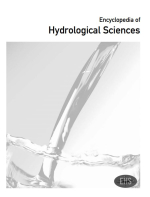Добрый день, Коллеги. Важное сообщение, просьба принять участие. Музей Ферсмана ищет помощь для реставрационных работ в помещении. Подробности по ссылке
Encyclopedia of hydrological sciences / Энциклопедия гидрологических наук
The field of hydrological science deals with the occurrence, distribution, movement, and properties of water on the earth. The science of hydrology holds a unique and central place in the field of earth system science, intimately linked with other water-related disciplines such as meteorology, climatology, geomorphology, hydrogeology, and ecology. Beyond basic scientific interest, water quantity and water quality have become two of the most pressing environmental issues of our time. The first comprehensive hydrological studies began in the late 1600s with Pierre Perrault’s field studies of the hydrological cycle and Edmund Halley’s experiments on evaporation. However, it was not until the mid-1850s that Henry Darcy quantified the hydraulics of groundwater flow and the linear relation between velocity and hydraulic gradient. Since then, and especially through the latter twentieth century, knowledge generation in the hydrological sciences exploded with new discoveries in each of the components of the hydrological cycle. Despite scientific and technological advances, the field of hydrological sciences has been highly fragmented across the engineering-science interface, between basic and applied studies, mathematical and descriptive work, and field and laboratory investigations. Such fragmentation has left many aspects of the hydrological cycle and its underlying mechanics still poorly understood. Such understanding is an essential prerequisite for hydrological prediction and for defining the level of uncertainty around these predictions. The Encyclopedia of Hydrological Sciences (EHS) is the first definitive research-level multivolume encyclopedia in the hydrological sciences where the full scope of research in the field of hydrological sciences is distilled – from engineering approaches to basic science, from process studies to mathematical modeling, and from field investigations to the laboratory. EHS thus provides an inclusive reference source for the field, defining what we know, what we think we know, and what we need to know about the future. EHS brings together information on hydrological processes from the sub-catchment to the global scale with a focus on research-level analysis <...>




